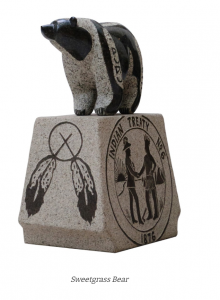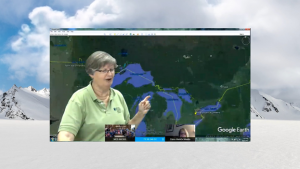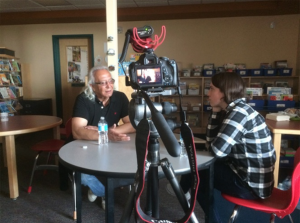Module 1: The Global and the Local in Indigenous Knowledge
Entry 5: Sweetgrass AR
Augmented Reality (AR) is a form of Virtual Reality (AR) that enables users to engage with a tech-facilitated interactive experience in a real-world environment, with varying modalities used to enhance the user’s experience. These can include auditory, visual, and other modalities to create a dynamic experience. Sweetgrass AR uniquely combines AR technology with Indigenous knowledge and pedagogical approaches in post-secondary environments; the HP Reveal platform is used to share AR stories about a particular treaty at Sweetgrass Bear, which is a sculpture carved by Cree artist Stewart Steinhauer (Sweetgrass AR, n.d.). The AR experience fosters conversations around relevant topics include but are not limited to settler-colonialism, information governance, and ownership of cultural knowledge (Sweetgrass AR, n.d.).

Figure 1. Sweetgrass Bear Sculpture. (n.d.). Stewart Steinhauer. Sweetgrass AR. Retrieved May 26, 2021 from https://sites.google.com/ualberta.ca/sweetgrassar/home. Screenshot by author.
As noted in my previous blog entry, storytelling is a central element of Indigenous cultures; they are also fundamental to healing and reconciliation processes while also promoting cultural revitalization and awareness. Presenting both students and faculty the opportunity to learn about the bear sculpture’s embedded Cree knowledge ensures cultural survival and enhances intercultural understanding.
Sweetgrass AR. (n.d.). Sweetgrass AR. Retrieved May 26, 2021, from https://sites.google.com/ualberta.ca/sweetgrassar/home


